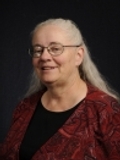Workshop: "Lean in a Nutshell"
Time: Thursday 09:00 - 12:00
Location: Trifork
It’s hard to imagine how the Empire State Building - all 85 stories plus a dirigible mooring dock - could be built in a year. In the spring of 1930, there was nothing but a hole in the ground, and by fall, the building looked pretty much the way it looks today. How did they do it?
Fundamentally, they framed the problem differently than we do today. Their mental model - which dictated what was important and what was not – would not be recognized in today's commercial world, except perhaps by those who understand lean thinking. The Empire State Building was not framed by cost, scheduled, and scope. It was constrained by two acres of land, New York City's zoning ordinances, $35,000,000 of capital, the laws of physics, and an absolute deadline. It was constructed by deeply experienced leaders who framed the issues they faced in terms of flow - the flow of materials, the flow of people, and the flow of cash.
Join Mary and Tom Poppendieck for a Lean in a Nutshell - a fast-paced tutorial aimed at senior developers and team leads. The lecture and discussion will focus on framing the software development process; it will cover four key frames that really make a difference when you are developing software: (1) A systems view, (2) Essential technical capability, (3) What it takes to deliver reliably, and (4) How to improve.
Here is the table of contents in a nutshell:
- Failure Demand – what it is, what causes it, and why you have to get rid of it
- Technical Excellence – what it means, where it comes from, and why it’s not optional
- Workflow – how it’s different than scheduling and why it’s more important than deadlines
- Customer Outcomes – just how concerned should the development team be?
- Relentless Improvement – taking retrospectives to the next level



